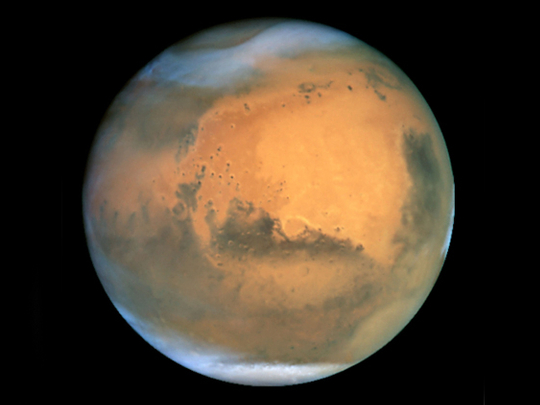
Sydney: Australian scientists who modelled conditions on Mars to examine how much of the red planet was habitable said on Monday that "large regions" could sustain terrestrial life.
Charley Lineweaver's team, from the Australian National University, compared models of temperature and pressure conditions on Earth with those on Mars to estimate how much of the distant planet was liveable for Earth-like organisms.
While just one per cent of Earth's volume - from core to upper atmosphere - was occupied by life, Linewaver said their world-first modelling showed three per cent of Mars was habitable, though most of it was underground.
"What we tried to do, simply, was take almost all of the information we could and put it together and say 'is the big picture consistent with there being life on Mars?'," the astrobiologist told AFP. "And the simple answer is yes... There are large regions of Mars that are compatible with terrestrial life."
Where previous studies had taken a "piecemeal" approach by examining particular sites on Mars for signs of life, Lineweaver said his research was a "comprehensive compilation" of the entire planet using decades of data.
Frozen water has been found at the poles on Mars and the ANU study examined how much of the planet could sustain water "that could be habitable by Earth-like standards by Earth-like microbes".
The low-pressure environment of Mars means water cannot exist as a liquid and will vaporise on the surface, but Lineweaver said the conditions are right underground, where the weight of the soil gives the added pressure required.
It would also be warm enough, at certain depths, for bacteria and other micro-organisms to thrive due to heat from the planet's core. The average surface temperature on Mars is minus 63 degrees Celsius.
Lineweaver said his study was "the best estimate yet published of how habitable Mars is to terrestrial microbes" and a significant finding given mankind had evolved from microbial life.
"It's not important if you want to figure out what the laws of physics are and you want to talk to some intelligent aliens who could build spaceships," he said. "If you're interested in the origin of life and how likely life is to get started on other planets, that's what relevant here."
Lineweaver's paper was published on Monday in the scientific journal Astrobiology.












